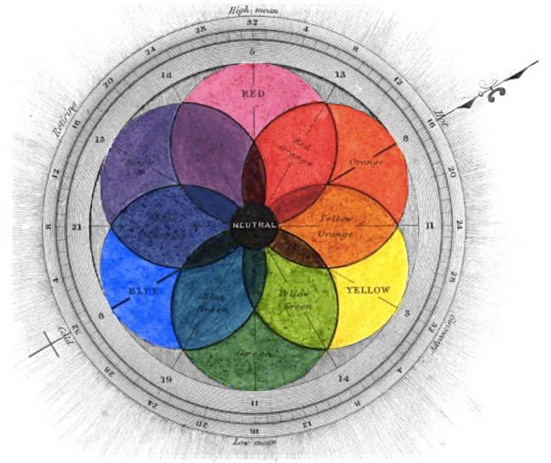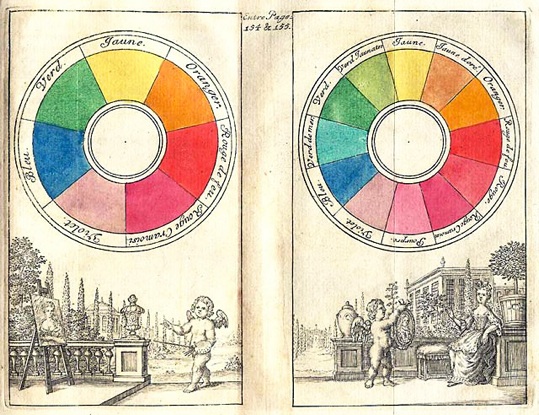Custom Colors

If you feel your color palette is too limited, if you want a slightly different kind of red or blue, or if you’re simply feeling creative, you can mix your own colors using your existing dyes. (You can also create custom colors by layering.)
If you are going to experiment, use dye solutions (dyes which have already been mixed with water), not the dye powder. Why? First of all, the dye powder is an irritant and a toxin, and you should try and have as little contact with it as possible. Second, the powders often do not look anything like the dyes they will produce, so it is hard to judge a proper mixture. Last, if using liquids, it it easier to titrate colors; a small amount of powder can cause much more change than a small amount of dye solution.
Dyes can be mixed to cause slight changes in a color. Vira Manko adds a small amount of red to light blue dye to get a more traditional blue, similar to that found on antique pysanky. Luba Perchyshyn adds a small amount of blue to her pink to make it a deeper color. Helen Badulak notes that she never throws out old dyes, but just mixes them with each other and with fresh ones to get new, interesting colors.
To create very different colors, it helps to know and understand the color wheel.
The one pictured here shows the PRIMARY colors–red, yellow and blue–in the innermost triangle.

They are mixed with each other to produce the SECONDARY colors:
primary + primary = secondary
red + yellow = orange
red + blue = violet
yellow + blue = green
The secondary colors–orange, violet and green– are shown in the pentagon. In the outer wheel you also have the INTERMEDIATE colors, those colors that would result if you mixed adjacent primary and secondary colors.
primary + secondary = intermediate
And then there are the TERTIARY colors–unfortunately, there are two definitions, quite different, of what constitutes a “tertiary” colors. In the most common usage, the intermediate colors above would be considered tertiaries (i.e. mixing a primary color with the adjacent secondary). thus,
primary + secondary = tertiary
Less commonly, the term is used for the product of mixing two secondary colors. We will stick with the more common usage, as it is more appropriate to dyes and pigments.
Tertiary colors are named as follows:
red + orange = vermillion
orange + yellow = amber
yellow + green = chartreuse
green + blue = aquamarine
blue + violet = indigo
violet + red = violet red
Colors that are opposite each other on the color wheel are called COMPLEMENTARY colors (e.g. yellow and violet). In color theory, two complementary colors, when mixed in the proper proportion, they produce a neutral color (grey, white, or black). When working with dyes or paints, you usually get a muddy brown instead. When placed next to each other, complementary colors make each other appear brighter, and thus are often juxtaposed for aesthetic reasons.
The full spectrum of colors and their blends can be seen even better in this version of the color wheel, where you can see an actual continuum of color. The odd spacing on this wheel, as compared to the one above, is because it uses a different system, the RGB (Red-Green-Blue), similar to that used in photography, and in television and computer monitors:

But pysankarstvo uses pigments, so the old-fashioned RYB (Red-Yellow-Blue) color spectrum is more applicable, like this RYB color chart from George Field's 1841 Chromatography; or, A treatise on colours and pigments: and of their powers in painting.

So have at it, and let me know if you come up with any interesting new recipes, just as I will post any interesting combinations I come up with. Keep in mind these few principles:
1.The color of the dye solution does not necessarily reflect the color that an egg will dye in that solution. Keep some “test eggs” around to try out new mixes. My friend Tym suggests testing new colors by rubbing a bit onto some white cardboard (e.g. a file card) to test it out.
2.A few drops of dye won’t affect the color produced when dyeing an egg very much. A drop or two of green in a jar of yellow may make it look chartreuse, but the dyed eggs will still come out yellow. (This has to do with the relative numbers of each dye molecule in solution). You need to use several tablespoons’ worth of dye to significantly change the color.
3.Mixing complementary colors will usually give you brown.
4.When mixing colors, write down what you did (amounts and colors), in case you should want to repeat that dye mixture again someday...........or should you never, ever want to repeat it.
Back to Main Dyes page
Back to Main Pysankarstvo page
Search my site with Google

Creating New Colors
Boutet's 7-color and 12-color color circles from 1708.



